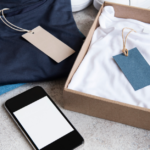Customers want to feel like they’re winning. Discover how retailers are adopting gamification strategies, and consider incorporating gaming features onto your platform.
Over the past 50 years, video game technology has evolved from primitive computer graphics to highly sophisticated, lifelike simulations. As technology continues to advance, gaming is becoming more accessible. No longer limited to arcades or desktops, gamers can now play on their mobile devices any time, anywhere.
Why does gaming continue to grow? As we play video games, our brains release dopamine, the neurotransmitter that plays a vital role in how humans feel pleasure. Once we learn that gaming makes us feel good, we want more, and we continue to chase that high.
For many years, retailers have taken advantage of our innate desire for play. Companies like eBay have used auction models to fulfill our desire for competition for decades. But now that gaming has grown in popularity and accessibility, more retailers are adopting gamification, the application of gaming fundamentals, to capitalize on the craze.
Let’s explore how some major retailers boost customer engagement and revenue with gamification and find out how you can incorporate these strategies onto your platform.
Retailers Adopting Gamification
Take a look at how fashion and beauty retailers are leveraging gamification:
- Louis Vuitton’s League of Legends collaboration. In 2019, Louis Vuitton collaborated with League of Legends to create a physical clothing collection inspired by the popular video game. Following the launch’s success, the luxury fashion brand created a mobile app dubbed Louis the Game, in which gamers search for candles hidden in a world immersed with classic Louis Vuitton monograms and trademark patterns.
- The Alibaba Group’s AliExpress coins. AliExpress coins are bonus currency given to customers who check the app daily and participate in games, like Flip ‘n’ Win. Customers can then exchange their coins for product discounts.
- NYX’s virtual Try It On feature. With the hope of boosting revenue and reducing returns, affordable beauty brand, NYX, launched their Try It On feature, a virtual tool shoppers can use to digitally sample products and test shades.
Gaming Features That Enhance Shopping Experiences
Make your customers feel like they’re winning big with these retail gamification strategies:
- Mobile coupons. Mobile coupons boost customer engagement and incentivize customers to make purchases. When done right, mobile coupons can have impressive results. PepsiCo once partnered with marketing platform FunMobility for a Super Bowl-themed mobile coupon activation. Results from the campaign resulted in an eight-times increase in ROI.
- Rewards programs. Point-based loyalty programs motivate customers to buy products and encourage them to keep coming back. Sephora mastered the art of rewards programs with their Beauty Insider Loyalty Program: a tiered system in which all customers accrue points with every purchase. By hitting specific spending targets, customers can increase their Beauty Insider status to receive additional discounts and perks. With rewards programs, the gamification is in customer spending—customers want to spend more to reach the next rewards level.
- Performance badges. Trigger users’ natural competitiveness and boost their engagement in your app or on your website with games that include point scoring or performance rankings. Users earn badges that reward them with promotions or discounts with each new level they reach, encouraging them to keep playing.
- Lucky spins. Give customers a chance to play an actual game, like lucky spins, pop-up games that mimic the popular show Wheel of Fortune. With apps like Shopify’s Lucky Spin Wheel, you can add a spinning wheel to your web or mobile platform. When someone visits your site, a lucky spin pop-up appears. The visitor can either close out of the pop-up or engage and enter their email address for a prize. If they enter their email address, they can click to spin the wheel, which will land on a prize, like a discount code, that they can use at checkout to claim their reward.
As technology becomes more sophisticated, gamification continues to transform retail. Want to increase customer interaction and boost revenue and sales with gamification? Contact Sophelle today to learn how to use gamification in your retail strategy.




